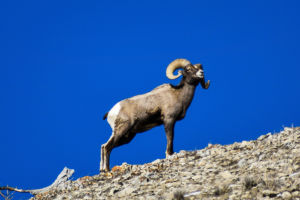Hey, Lykkers! Have you ever marveled at the grace and speed of a cheetah?
These magnificent big cats thrive in unique habitats that play a crucial role in their survival. Let’s dive into the fascinating world of cheetah habitats and discover what makes them so special.
Where Do Cheetahs Live?
Cheetahs primarily inhabit the savannas, grasslands, and open forests of Africa. These environments provide the ideal conditions for their hunting style, allowing them to use their incredible speed to catch prey. While they prefer vast, open spaces where they can sprint, they also need areas with sufficient cover to stalk their quarry. The serengeti plains of Tanzania and the Kalahari Desert in Botswana are prime examples of their preferred habitats.
Characteristics of Cheetah Habitats
To thrive, cheetahs require specific habitat characteristics:
Open Terrain: Cheetahs excel in areas with minimal vegetation, which allows them to spot potential prey from a distance.
Prey Availability: Their habitats must support populations of small to medium-sized ungulates, such as gazelles and impalas, which are their primary food sources.
Water Sources: While cheetahs can go without water for extended periods, having access to drinking water is essential for their survival, especially in hot climates.
Shelter: Although they are agile hunters, cheetahs still need places to hide from larger predators, such as lions or hyenas. Tall grass or bushes offer excellent cover for stalking and resting.
Discovering the Speed and Grace of the Cheetah
Video by Amazing Animal Facts!
Threats to Cheetah Habitats
Unfortunately, cheetah habitats face significant threats, impacting their populations. Here are some major challenges:
Habitat Loss: As human populations expand, agricultural development and urbanization encroach on cheetah habitats, reducing the available land for these animals.
Human-Wildlife Conflict: When cheetahs venture into human settlements in search of food, conflicts can arise, often leading to the killing of these cats by farmers protecting their livestock.
Poaching and Illegal Wildlife Trade: Cheetahs are often targeted for their beautiful fur and are sometimes kept as exotic pets, further endangering their populations.
Conservation Efforts
Many organizations are working to protect cheetah habitats and ensure the survival of these magnificent animals. Some key conservation strategies include:
Protected Areas: Establishing national parks and wildlife reserves helps to safeguard essential habitats and create safe spaces for cheetahs to thrive.
Community Engagement: Involving local communities in conservation efforts encourages sustainable practices and reduces human-wildlife conflict.
Research and Monitoring: Ongoing research helps track cheetah populations and assess habitat quality, informing conservation strategies to better protect these incredible cats.
Understanding the habitats that support cheetah populations is vital for their conservation. By protecting their natural environments and addressing the threats they face, we can help ensure that future generations will also have the opportunity to admire these remarkable animals in the wild. Together, we can make a difference for the cheetah and the ecosystems they inhabit!


